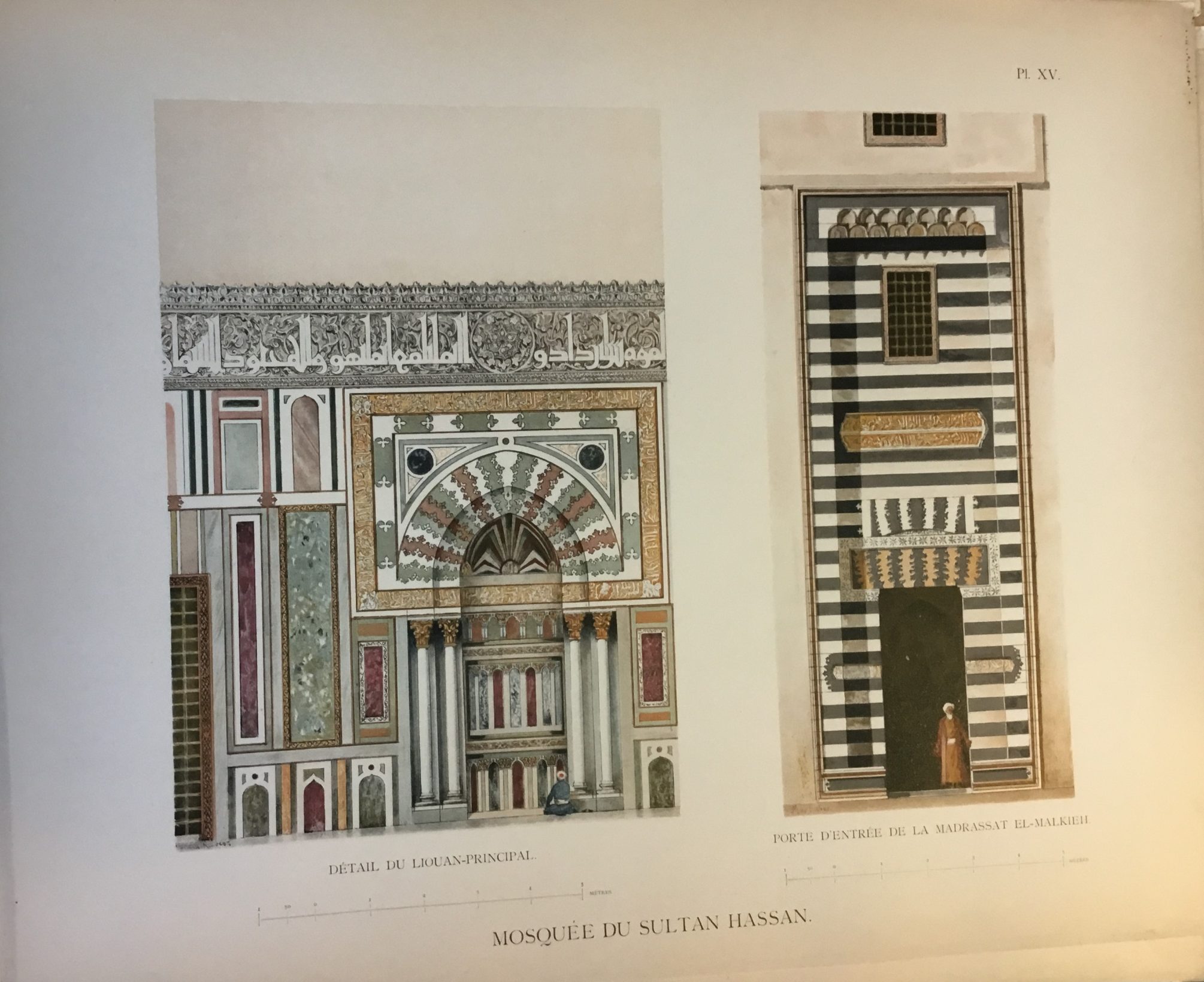La Mosquée du Sultan Hassan au Caire.
Herz Bey, Max.
Synopsis
In the 19th century, the state of preservation of Arab-Islamic monuments in Egypt deteriorated rapidly. In order to counteract this process, in 1881, Khedive Tawfiq founded the Comité de Conservation des Monuments de l’Art Arabe. In the same year, the Austrian architect Max Herz was employed as a draftsman by Franz Pasha, the director of the Technical Office of the Ministry of Religious Endowments (Waqf). Herz was later appointed as chief architect, and subsequently held several positions including director of the Arab Museum in 1892 (Islamic Art Museum), and in 1901 became director of the Comité. Throughout his career in the Egyptian civil service, Herz developed a reputation that led him to being honoured with the title Bey in 1895 and later Pasha in 1912. Although decisions were taken collectively in the sessions of the Comité, which consisted of both Egyptian and European scholars, Herz played a decisive role in the Comité, which soon extended the sphere of its activities to monuments of Coptic architecture too. For over a quarter of a century, Herz played an outstanding role in the preservation of monuments of Arab-Islamic and Coptic architecture. We are indebted to him for the survival of a number of monuments, while in the case of restored monuments it was he who more or less determined the form in which they appear today. Max Herz was an outstanding historian of architecture, and his publications are worthy of our attention, because they were written by a highly gifted and well educated specialist who lived among the monuments of Cairo over the course of 35 years, in everyday contact and continuous interaction with them. He subjected many of them to interventions of varying degrees, ranging from thorough examination to complete reconstruction. Among Herz’s publications is his monograph on the mosque complex of Sultan Hasan. Ever since it was built in the mid-fourteenth century, the complex of al-Nasir Hasan has dazzled those who have seen it, from contemporary chroniclers, to travellers through the ages, to modern scholars. In praise of the complex, alMaqrizi writes: “There is no sanctuary of the Muslims, known in the lands of Islam, that equals this jami‘ and its dome, the likes of which has not been built in Egypt, Syria, Iraq, North Africa, or Yemen.” Both Ibn Taghribirdi and Ibn Shahin describe it as an edifice with no equal in the whole world and one of the wonders of the world. Among Western travellers, both Pietro della Valle and Jean Thevenot, who visited Cairo in the 17th century, proclaimed it the most impressive jami‘ they had ever seen. In modern times, the fascination with this complex began with Max Herz’s art historical study. With the aim of launching an early type of ‘media campaign’ to pave the way for the complete reconstruction of one of the most important monuments of Arab-Islamic architecture in Cairo and perhaps in the entire Islamic world, in 1899 Herz published this folio-size monograph on the mosque complex of Sultan Hasan, a publication which retains its importance to this day and on which many subsequent studies have been based.
Bibliographic reference: Creswell, 67; OCLC 7065880.








